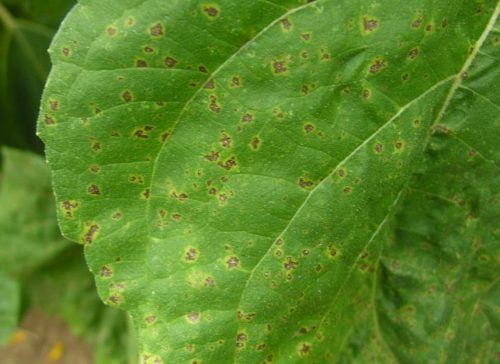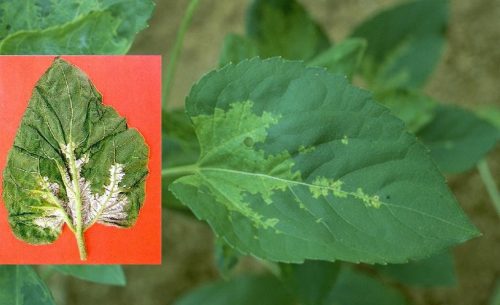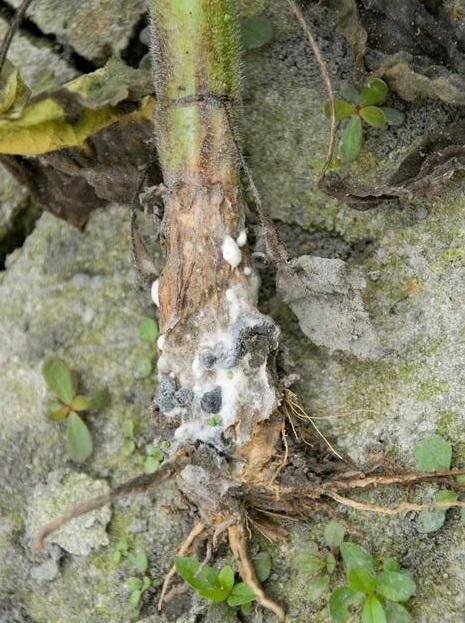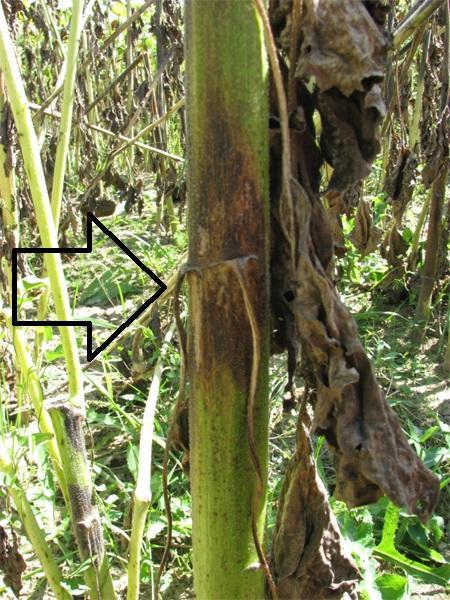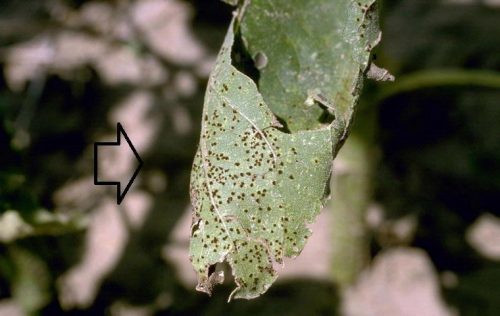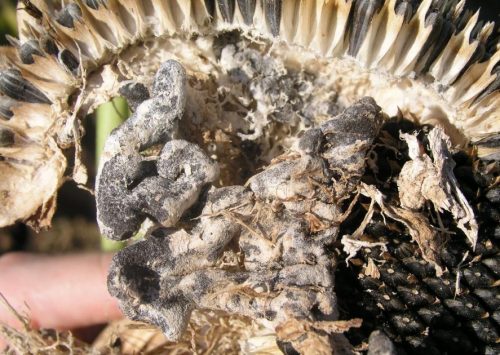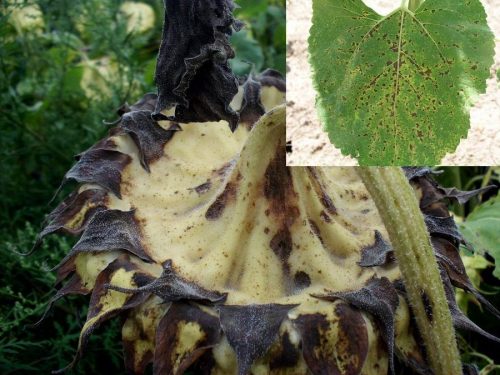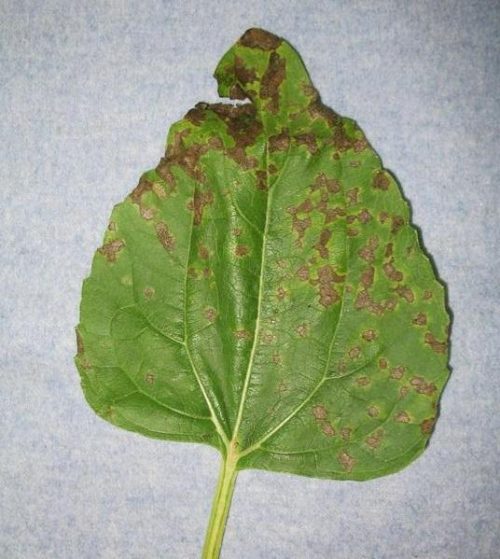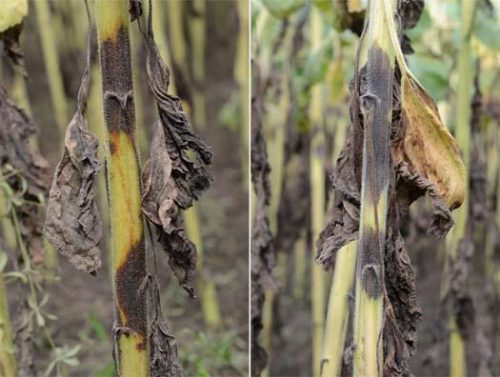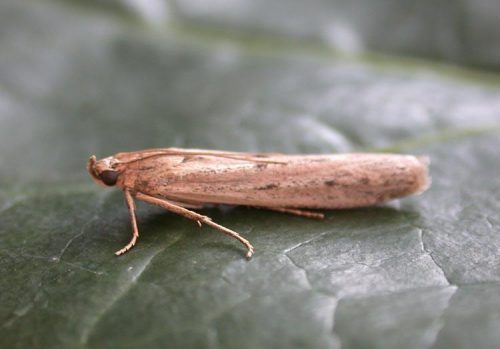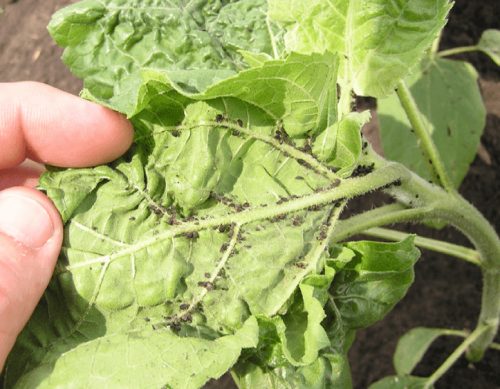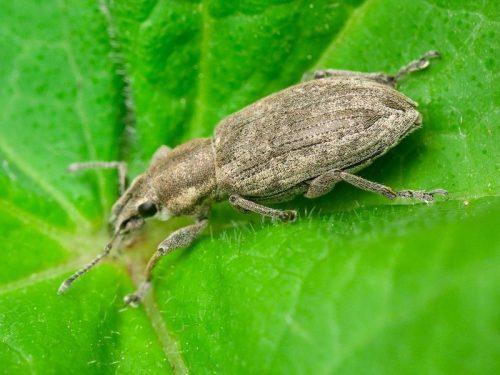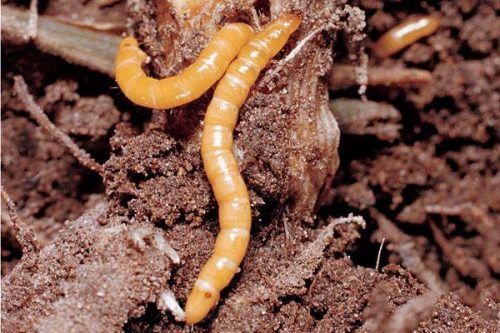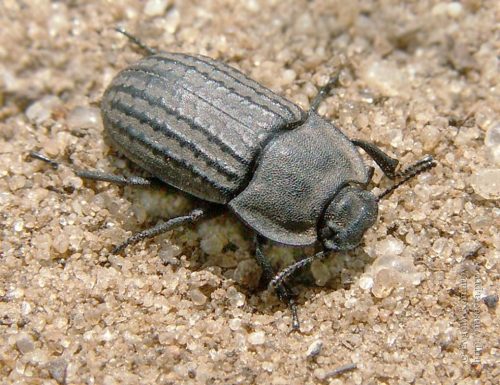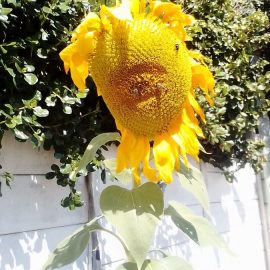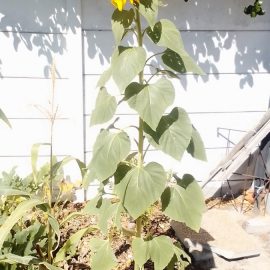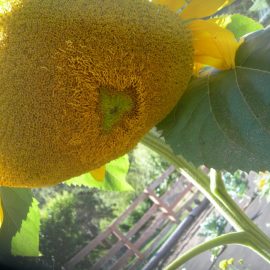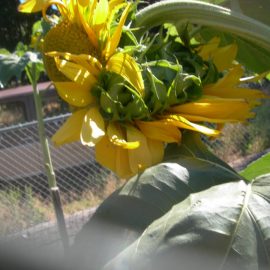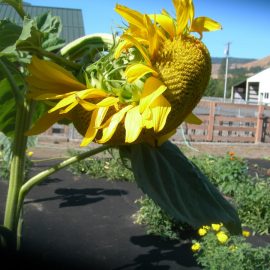Sunflower treatments, pest and disease control
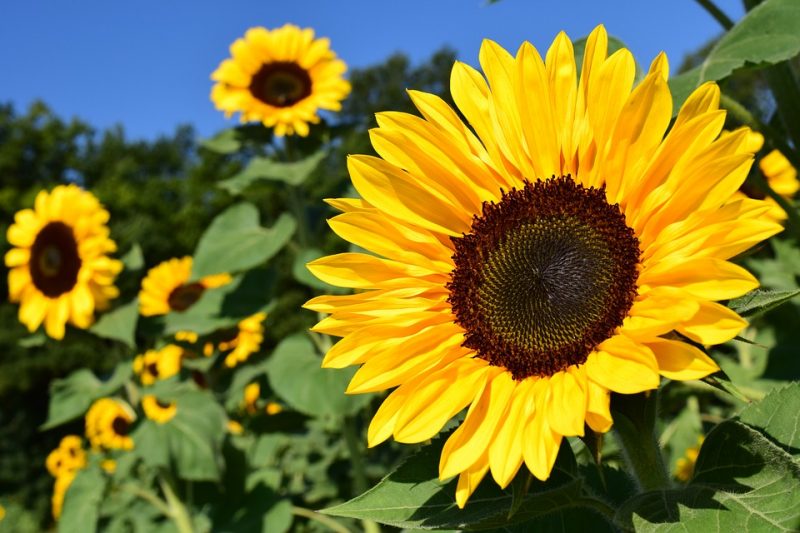
Sunflower (Helianthus annuus) is a very popular technical plant that belongs to the Asteraceae family. Sunflower seeds contain large amounts of oil (up to 55%). Sunflower oil is used in the food industry, the biofuel industry, or in soap making. This has led to the intense cultivation of this plant worldwide. The sunflower is native to North America. In Europe, it was cultivated for decorative purposes, and later became one of the most important technical plants.
The main diseases of sunflower
Leaf blight (Pseudomonas syringae pv helianthi)
The young leaves have spots variable in shape and size, surrounded by a light halo. On the mature leaves, the spots are angular and delimited by the ribs. The spots merge and cover large portions of the foliar limb. The attacked tissues turn brown and dry, and the leaves get a wrinkled appearance. In cold and humid weather, a bacterial exudate appears on the surface of the spots.
Prevention and control methods:
- using seeds from healthy crops;
- adhering to a rotation of 4-5 years.
Downy mildew (Plasmopara helianthi)
The fungus affects the plants in all stages of development, the worst effects occurring in young plants. The plants are dwarf, have thin, short stems, and the leaves are small and crowded. Chlorotic spots appear on the top side of the leaves and white mycelial fuzz on the underside. The root system is poorly developed and the plants dry out before producing seeds. Moderate temperatures (15-18° C) and high air humidity favor the appearance of this disease.
Prevention and control methods:
- cultivating resistant varieties and hybrids;
- removing attacked plants from the crop;
- adhering to a rotation of 4-5 years;
- using seeds from healthy crops;
- harvesting at the optimum time;
- carrying out treatments with specific fungicides.
White mold (Sclerotinia sclerotiorum)
It is one of the most damaging diseases that affects the sunflower. This fungus attacks the crop in all phases of vegetative growth. If the attack occurs in the seedling phase, it causes the seedlings to fall and rot. In the case of mature plants, the fungus develops at the base of the stem by the appearance of white mycelial felt. The attacked tissues turn brown and rot. The leaves of the plants wither and the plants fall to the ground. A mycelial white felt can also appear on the capitulum. A whitish mold develops among the achenes. Infected seeds have a discolored shell, crack very easily and form a brown core with an unpleasant taste.
Prevention and control methods:
- adhering to a rotation of 4-6 years;
- balanced fertilization;
- using healthy seeds;
- weed destruction;
- cultivating resistant hybrids;
- carrying out treatments before and after flowering.
Recommended products
-
You can find products on a different store
Change Store -
You can find products on a different store
Change Store -
You can find products on a different store
Change Store -
You can find products on a different store
Change Store -
You can find products on a different store
Change Store -
You can find products on a different store
Change Store -
You can find products on a different store
Change Store -
You can find products on a different store
Change Store -
You can find products on a different store
Change Store -
You can find products on a different store
Change Store -
You can find products on a different store
Change Store -
You can find products on a different store
Change Store -
You can find products on a different store
Change Store -
You can find products on a different store
Change Store -
You can find products on a different store
Change Store -
You can find products on a different store
Change Store -
You can find products on a different store
Change Store -
You can find products on a different store
Change Store -
You can find products on a different store
Change Store -
You can find products on a different store
Change Store -
You can find products on a different store
Change Store -
You can find products on a different store
Change Store -
You can find products on a different store
Change Store -
You can find products on a different store
Change Store
Phomopsis stem canker of sunflowers (Diaporthe helianthi)
This fungus causes significant damage in conditions of heavy rainfall and high temperatures. The disease manifests on the leaves and stems by the appearance of ellipsoidal spots or brown lesions, bordered by yellow areas. The spots can become bigger and can cover the entire leaf. In case of a strong attack, the whole plant has a charred appearance.
Prevention and control methods:
- adhering to a rotation of 4-6 years;
- balanced fertilization;
- using healthy seeds;
- weed destruction;
- cultivating resistant hybrids;
- carrying out treatments before and after flowering.
Recommended products
-
You can find products on a different store
Change Store -
You can find products on a different store
Change Store -
You can find products on a different store
Change Store -
You can find products on a different store
Change Store -
You can find products on a different store
Change Store -
You can find products on a different store
Change Store -
You can find products on a different store
Change Store -
You can find products on a different store
Change Store -
You can find products on a different store
Change Store -
You can find products on a different store
Change Store -
You can find products on a different store
Change Store -
You can find products on a different store
Change Store -
You can find products on a different store
Change Store -
You can find products on a different store
Change Store -
You can find products on a different store
Change Store -
You can find products on a different store
Change Store -
You can find products on a different store
Change Store -
You can find products on a different store
Change Store -
You can find products on a different store
Change Store -
You can find products on a different store
Change Store -
You can find products on a different store
Change Store -
You can find products on a different store
Change Store -
You can find products on a different store
Change Store -
You can find products on a different store
Change Store
Rust (Puccinia helianthi)
The disease occurs in early spring, and the first symptoms appear on the leaves in the form of circular yellow spots. The disease evolves and at the beginning of summer the spots turn brown, and by autumn the spots become black. This disease is common in sunflower crops and can cause significant losses.
Prevention and control methods:
- destruction of weeds and spontaneous seedlings;
- a balanced fertilization;
- adhering to crop rotation;
- cultivating resistant hybrids;
- carrying out treatments with specific fungicides.
Grey mould (Botrytis cinerea)
The fungus attacks the capitulum in rainy summers. The fungus leads to the rot of the tissues that will be covered by a gray mold. The fungus also reaches the achenes, which it covers with mold. Following the attack, the seeds turn brown and become dry. They lose their germination capacity and can transmit the infection to the crops of the following years.
Prevention and control methods:
- adhering to a rotation of 4-6 years;
- balanced fertilization;
- using healthy seeds;
- weed destruction;
- cultivating resistant hybrids;
- carrying out treatments before and after flowering.
Recommended products
-
You can find products on a different store
Change Store -
You can find products on a different store
Change Store -
You can find products on a different store
Change Store -
You can find products on a different store
Change Store -
You can find products on a different store
Change Store -
You can find products on a different store
Change Store -
You can find products on a different store
Change Store -
You can find products on a different store
Change Store -
You can find products on a different store
Change Store -
You can find products on a different store
Change Store -
You can find products on a different store
Change Store -
You can find products on a different store
Change Store -
You can find products on a different store
Change Store -
You can find products on a different store
Change Store -
You can find products on a different store
Change Store -
You can find products on a different store
Change Store -
You can find products on a different store
Change Store -
You can find products on a different store
Change Store -
You can find products on a different store
Change Store -
You can find products on a different store
Change Store -
You can find products on a different store
Change Store -
You can find products on a different store
Change Store -
You can find products on a different store
Change Store -
You can find products on a different store
Change Store
Alternaria infection (Alternaria helianthi)
Following the attack of this disease, the plants are weakened due to the partial destruction of the fluid-conducting tissues. The fungus attacks all the aerial organs of the plant. On the leaves, there are spots of different shapes, brown in color, surrounded by a light halo. The attack on the stem manifests through the occurrence of long and thin spots. The tissues next to these spots necrotize. The capitulum initially displays discoloration spots that sink into the tissue and turn brown.
Prevention and control methods:
- balanced fertilization;
- cultivating resistant hybrids;
- an optimum sowing density;
- carrying out treatments with specific fungicides.
Recommended products
-
You can find products on a different store
Change Store -
You can find products on a different store
Change Store -
You can find products on a different store
Change Store -
You can find products on a different store
Change Store -
You can find products on a different store
Change Store -
You can find products on a different store
Change Store -
You can find products on a different store
Change Store -
You can find products on a different store
Change Store -
You can find products on a different store
Change Store -
You can find products on a different store
Change Store -
You can find products on a different store
Change Store -
You can find products on a different store
Change Store -
You can find products on a different store
Change Store -
You can find products on a different store
Change Store -
You can find products on a different store
Change Store -
You can find products on a different store
Change Store -
You can find products on a different store
Change Store -
You can find products on a different store
Change Store -
You can find products on a different store
Change Store -
You can find products on a different store
Change Store -
You can find products on a different store
Change Store -
You can find products on a different store
Change Store -
You can find products on a different store
Change Store -
You can find products on a different store
Change Store
Septoria leaf spot (Septoria helianthi)
It is a fairly common fungus in cultures and it does not cause significant damage. However, in combination with other pathogens, it can disrupt plant growth. Yellow-green spots of various shapes appear on the leaves. Black spots are forming inside the spots, which represent the fructification of the fungi. The attacked tissues die and the leaves dry out.
Prevention and control methods:
- balanced fertilization;
- cultivating resistant hybrids;
- an optimum sowing density;
- adhering to a rotation of 4-6 years;
- using healthy seed;
- carrying out treatments with specific fungicides.
Phoma black stem (Phoma oleracea var helianthi)
The main type of attack manifests on the stem at the place where the leaf is attached to the stalk. Brownish-black spots, of variable sizes, appear, delimited by healthy tissues. The disease progresses and the spots crack and destroy the tensile strength of the plants. The fungus overwinters on the plant remain found on the soil surface.
Prevention and control methods:
- cultivating resistant hybrids;
- a correct crop rotation;
- using healthy seeds;
- carrying out treatments with specific fungicides.
Recommended products
-
You can find products on a different store
Change Store -
You can find products on a different store
Change Store -
You can find products on a different store
Change Store -
You can find products on a different store
Change Store -
You can find products on a different store
Change Store -
You can find products on a different store
Change Store -
You can find products on a different store
Change Store -
You can find products on a different store
Change Store -
You can find products on a different store
Change Store -
You can find products on a different store
Change Store -
You can find products on a different store
Change Store -
You can find products on a different store
Change Store -
You can find products on a different store
Change Store -
You can find products on a different store
Change Store -
You can find products on a different store
Change Store -
You can find products on a different store
Change Store -
You can find products on a different store
Change Store -
You can find products on a different store
Change Store -
You can find products on a different store
Change Store -
You can find products on a different store
Change Store -
You can find products on a different store
Change Store -
You can find products on a different store
Change Store -
You can find products on a different store
Change Store -
You can find products on a different store
Change Store
The main pests of sunflower
Eurasian sunflower moth (Homoeosoma nebulella)
It produces two generations a year and overwinters in the larval stage in the soil. The insect attacks several plants in the Asteraceae family, but causes the most damage to sunflower crops. The larvae consume the pollen or attack the floral organs. Various pathogens infect the wounds produced by them. The attacked organs are covered with silk threads and droppings.
Prevention and control methods:
- deep plowing before setting up the culture;
- weed removal;
- cultivating resistant hybrids;
- carrying out treatments with specific insecticides.
Leaf-curling plum aphid (Brachycaudus helichrysi)
The insect mainly attacks the apricot, plum, and peach trees, but it can also cause significant damage to sunflower crops. The colonies infest the leaves or the unopened inflorescences. The attacked tissues curl up, turn yellow, and the plants form a small calathidium with dry seeds.
Prevention and control methods:
- early sowing;
- carrying out treatments with specific insecticides.
Recommended products
-
You can find products on a different store
Change Store -
You can find products on a different store
Change Store -
You can find products on a different store
Change Store -
You can find products on a different store
Change Store -
You can find products on a different store
Change Store -
You can find products on a different store
Change Store -
You can find products on a different store
Change Store -
You can find products on a different store
Change Store -
You can find products on a different store
Change Store -
You can find products on a different store
Change Store -
You can find products on a different store
Change Store -
You can find products on a different store
Change Store -
You can find products on a different store
Change Store -
You can find products on a different store
Change Store -
You can find products on a different store
Change Store -
You can find products on a different store
Change Store -
You can find products on a different store
Change Store -
You can find products on a different store
Change Store -
You can find products on a different store
Change Store -
You can find products on a different store
Change Store -
You can find products on a different store
Change Store -
You can find products on a different store
Change Store -
You can find products on a different store
Change Store -
You can find products on a different store
Change Store
Grey corn weevil (Tanymecus dilaticollis)
It produces one generation per year and overwinters in the adult stage in the soil. Adults appear in late March when temperatures exceed 9° C. It is a polyphagous species, but it causes the most damage to corn and sunflower crops. Adults gnaw the leaves from the sprouting phase. After the plant has developed 3-4 true leaves, this insect is no longer a danger.
Control measures:
- treating the seeds before sowing;
- deep plowing before setting up the culture;
- early sowing;
- carrying out treatments during the vegetative growth period with specific insecticides.
Wireworms (Agriotes sp.)
These insects are the larvae of click beetles. They overwinter in the soil as larvae of different stages and produce a generation once every 4-5 years. Wireworms are very dangerous because their attack cannot be identified quickly. They consume the root system, and the plant withers and dies.
Control measures:
- deep autumn plowing;
- treating the seeds before sowing;
- crop rotation with less attacked species (peas, beans, soybeans, mustard);
- applying mineral fertilizers that have a harmful effect on them;
- carrying out treatments with specific insecticides.
Recommended products
-
You can find products on a different store
Change Store -
You can find products on a different store
Change Store -
You can find products on a different store
Change Store -
You can find products on a different store
Change Store -
You can find products on a different store
Change Store -
You can find products on a different store
Change Store -
You can find products on a different store
Change Store -
You can find products on a different store
Change Store -
You can find products on a different store
Change Store -
You can find products on a different store
Change Store -
You can find products on a different store
Change Store -
You can find products on a different store
Change Store -
You can find products on a different store
Change Store -
You can find products on a different store
Change Store -
You can find products on a different store
Change Store -
You can find products on a different store
Change Store -
You can find products on a different store
Change Store -
You can find products on a different store
Change Store -
You can find products on a different store
Change Store -
You can find products on a different store
Change Store -
You can find products on a different store
Change Store -
You can find products on a different store
Change Store -
You can find products on a different store
Change Store -
You can find products on a different store
Change Store
Darkling beetle (Opatrum sabulosum)
It produces one generation per year and overwinters in the adult stage in the surface layer of the soil. Adults pose big problems during the early stages of vegetative growth. The attack is similar to that of the grey corn weevil. Severe attacks can occur on crops sown early. Also, in conditions of drought, the damage can reach up to 60%.
Control measures:
- deep autumn plowing;
- treating the seeds before sowing;
- crop rotation with less attacked species (peas, beans, soybeans, mustard);
- carrying out treatments with specific insecticides.














































































































































































































































































































































































































































